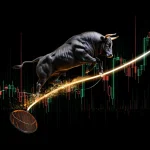
The greatest ignorance is to reject something you know nothing about. Derek Bok Quotes
Contra Corner: The Contrarian Investing Strategy
Updated Nov 28, 2024
The differences between contrarian investing and mass psychology. Contrarian investing is taking a position opposite to that of the masses, often getting in early based on this approach. Mass psychology involves studying the actions and emotions of the groups before making a move, waiting for a boiling point of euphoria or panic. Very few investors today can genuinely be considered true contrarians, instead falling into the “fashion contrarians” category who want to follow the trend of doing the opposite of what’s popular.
Contrarian Investing: Going Against the Grain
Contrarian investing requires going against the grain and taking positions that oppose the masses. This approach works best when most investors are pessimistic about a particular market, and contrarians take an opposing view. However, it is essential to note that contrary investors must have a sound rationale for their decision, as blindly taking positions can lead to significant losses.
Mass psychology is like trying to read a room full of people at a party. You wait for the emotional vibe to hit the boiling point, like when Uncle Bob has had too many and starts dancing on the table. Then you make your move!
Fashion Contrarians vs True Contrarians
But let’s be honest, very few individuals today can call themselves “true contrarians.” They’re more like “fashion contrarians” who just like to do the opposite of what’s popular because it’s hip or something. It’s like going to a party and trying to be the only one not drinking, just for the sake of it. You’re not against the grain; you’re just trying to be excellent.
Contra Corner Tip 2: Mass Psychology Holds The Key
Mass Psychology Improves Contrarian Investing Results. Investors who adopt the doctrine of mass psychology will understand how to use market sentiment to their advantage. Mass psychology takes the principle of contrarian investing and then pushes it to the next level. Students of mass psychology look for extreme situations.
In other words, sentiment should not just be bullish before an opposing strategy is put into play; it should be at the boiling point. Only then will the student of mass psychology look for an exit and attempt to take an opposing position to that of the masses.
Bitcoin: a perfect example of Mass Psychology in action
Eventual difficulties have often accompanied the phenomenon of mass involvement in a market. This was evident in the case of Bitcoin, where the general public was overwhelmingly captivated and optimistic about the asset. Predictions of exorbitant price targets, such as $100,000, were made without proper justification, leading to a sense of irrational exuberance.
In a December 4th, 2017 article, the market was characterized as being in a “feeding frenzy” state and prone to correction. This serves as a reminder of the dangers of becoming overly invested in the hype surrounding an asset without considering potential drawbacks. Bitcoin had done what precious metals could not.
On the 8th of March 2018, we had this to say regarding Bitcoin
Despite the heavy beating Bitcoin has taken, the sentiment has not turned bearish, and there are still too many articles being published claiming that Bitcoin is going to surge to 100K and beyond. The statement suggests that these so-called experts spouting outrageous Bitcoin targets are complete charlatans.
They have no regard for actual market analysis and instead rely on sensationalist forecasts to advance their personal agendas. If their predictions don’t come to fruition, they hide behind feeble excuses like market manipulation. The fact that Bitcoin is trading over 50% below its highs does not seem to faze these experts, who are quite resilient and continue to push for targets that border on the fantastic. It’s a disgrace that they continue to mislead the public with their baseless optimism.. Is the Bitcoin Bull Market dead or just taking a breather?
And the rest, as they say, is history.
Contra Corner 3: Navigating the Storm of Mass Psychology
In the stock market, the masses often resemble a frenzied mob, their actions driven by fear, greed, and herd mentality. However, true investment success lies not in following the crowd but in understanding the underlying currents of mass psychology. It’s time to don your captain’s hat and chart a course through the storm, steering clear of the pitfalls that trap the uninitiated.
Imagine the market as a vast ocean, with investors as sailors. The “Gold Bugs,” passionate devotees of precious metals, are akin to experienced fishermen who swear by the open sea. They navigate by the stars of fundamental analysis, trusting in the enduring value of gold as a safe haven in turbulent times. But what happens when their ranks swell, and the boat becomes overcrowded?
When a market becomes saturated with committed bulls, its continued ascent relies on momentum traders jumping on the bandwagon. These traders, however, are like fair-weather sailors, prone to changing course at the slightest shift in wind direction. Their short-term focus can lead to abrupt changes in market direction, resulting in painful corrective phases. The housing collapse in 2008 and the dot-com bubble bursting in 2000 are stark reminders of the dangers ahead when momentum wanes.
To navigate these treacherous waters, it’s essential to adopt the mindset of a contrarian mariner. It would be best if you constantly scanned the horizon, studying the behaviour and emotions of your fellow sailors. Are they driven by fear or greed? Are their positions based on solid analysis or herd mentality? By understanding the dynamics of mass psychology, you can anticipate potential storms and adjust your sails accordingly.
The study of mass psychology is akin to deciphering the ocean’s currents and tides. It involves a deep understanding of market conditions, player behaviour, and the underlying rules of the game. However, unlike traditional contrarians, mass psychologists consider the intensity of emotions among the masses and the contrarian camp. By gauging the emotional state of all participants, you gain a more accurate reading of market sentiment.
Revolutionizing Technical Analysis: Unlocking the Market’s Secrets
Technical analysis is more than just lines and indicators on a chart; it’s a treasure map leading to hidden riches. Think of it as a sailor’s compass guiding you through the market’s treacherous waters. But to truly revolutionize your approach, let’s draw inspiration from the ancient world.
Consider the Fibonacci sequence, a natural mathematical phenomenon, from the spiral pattern of seashells to the arrangement of leaves on a branch. Applied to the stock market, it becomes a powerful tool for predicting areas of support and resistance. It’s as if the market itself is whispering secrets to those who can decipher its code.
Fast-forward to the 2008 financial crisis, and you’ll see a similar story unfold with gold prices. Sellers cashed out at resistance levels, only to see buyers rush in at support levels, creating a dynamic dance between fear and greed.
The Pitfalls of Contrarian Investing: Lessons from the Gold Bugs
Gold investors experienced a dramatic shift in sentiment over the past decade, moving from euphoria to misery as prices plummeted from $1,800 to $1,000 despite the creation of trillions of dollars since 2011. This cautionary tale highlights the risks of relying solely on contrarian or sentiment-based investing strategies, which may provide short-term gains but can result in significant losses if broader market conditions are not considered.
The current bearish sentiment towards gold, reminiscent of 2003, could present a compelling long-term buying opportunity for astute investors. However, a comprehensive and well-informed approach incorporating multiple factors, such as market trends and economic conditions, is crucial for navigating financial markets successfully.
Sentiment-Based Investing: A Nuanced Approach
Sentiment-based investing is a sophisticated extension of traditional contrarian investing. It considers market participants’ collective emotions and beliefs. This approach involves waiting until sentiment reaches an extreme level before taking action, but it is not a one-size-fits-all strategy.
Successful sentiment-based investing requires careful consideration of market conditions and a deep understanding of market psychology. Less attention on sectors such as precious metals may present opportunities for long-term growth and diversification.
Key Takeaways
Contrarian investing can be risky and emotionally challenging. It requires skill to discern when the crowd is wrong and patience to wait for sentiment to shift.
Sentiment metrics, such as put/call ratios and investor surveys, are often read as contrarian indicators, suggesting the opposite of their obvious interpretation.
Chinese equities could be the ultimate contrarian play, with price clearing a three-year downtrend and a “good overbought” condition.
Market sentiment can create feedback loops, reinforcing and driving prices further in the same direction, leading to overbought or oversold conditions.
While closely related, market sentiment and fundamental analysis are distinct. Sentiment is related to psychology and emotions, and basic analysis is associated with business or project performance.
Contra Corner: Navigating Opposing Viewpoints in Investing
Renowned investor and author Howard Marks emphasizes the importance of second-level thinking, stating, “First-level thinking says, ‘It’s a good company; let’s buy the stock.’ Second-level thinking says, ‘It’s a good company, but everyone thinks it’s a great company, and it’s not. So the stock’s overrated and overpriced; let’s sell.'”
Contrarian Investing and Mass Psychology
Contrarian investing involves taking positions opposite to the majority of investors. However, there is a distinction between true contrarians, who have a sound rationale for their decisions, and “fashion contrarians,” who do the opposite of what’s popular to appear trendy.
Legendary investor Warren Buffett advises, “Be fearful when others are greedy, and greedy when others are fearful.” This sentiment highlights the potential benefits of going against the crowd when market conditions warrant it.
Incorporating an understanding of mass psychology can improve results in contrarian investing. As Charles Mackay noted in his 1841 book “Extraordinary Popular Delusions and the Madness of Crowds,” “Men, it has been well said, think in herds; it will be seen that they go mad in herds, while they only recover their senses slowly, and one by one.”
The Bitcoin Example
The article uses Bitcoin as an example of mass psychology in action, warning against becoming overly invested in the hype. 2017 Bitcoin experienced a meteoric rise, with prices increasing by over 1,300%. However, the subsequent crash in 2018 highlights the risks of following the crowd without proper analysis.
As investor and entrepreneur Peter Thiel cautions, “When everyone believes something is risky, their unwillingness to buy usually reduces its price to the point where it’s not risky. Broadly negative opinion can make it the least risky thing since all optimism has been driven out of its price.”
Other articles of interest












